Adding video borders or a video border frame is a simple yet effective way to draw more attention to your content. When you add a border to a video, the clip instantly looks more polished and visually engaging for viewers. This becomes even more important when you plan to add borders to video clips that include a second footage as an overlay above the first one.
A common example is a webcam recording that you might have shot separately and now want to combine with the main footage so both clips look like a single film. In such cases, knowing how to add borders to video properly helps separate layers visually while keeping the final result clean and professional.
With that said, here you will learn how to add a border to a video step by step using Filmora. After reading this guide, you will be able to add a white border to a video in multiple ways, use a different color of your choice, apply a frame overlay so it looks like a video border frame, and even add a border to humans if they appear in the video.
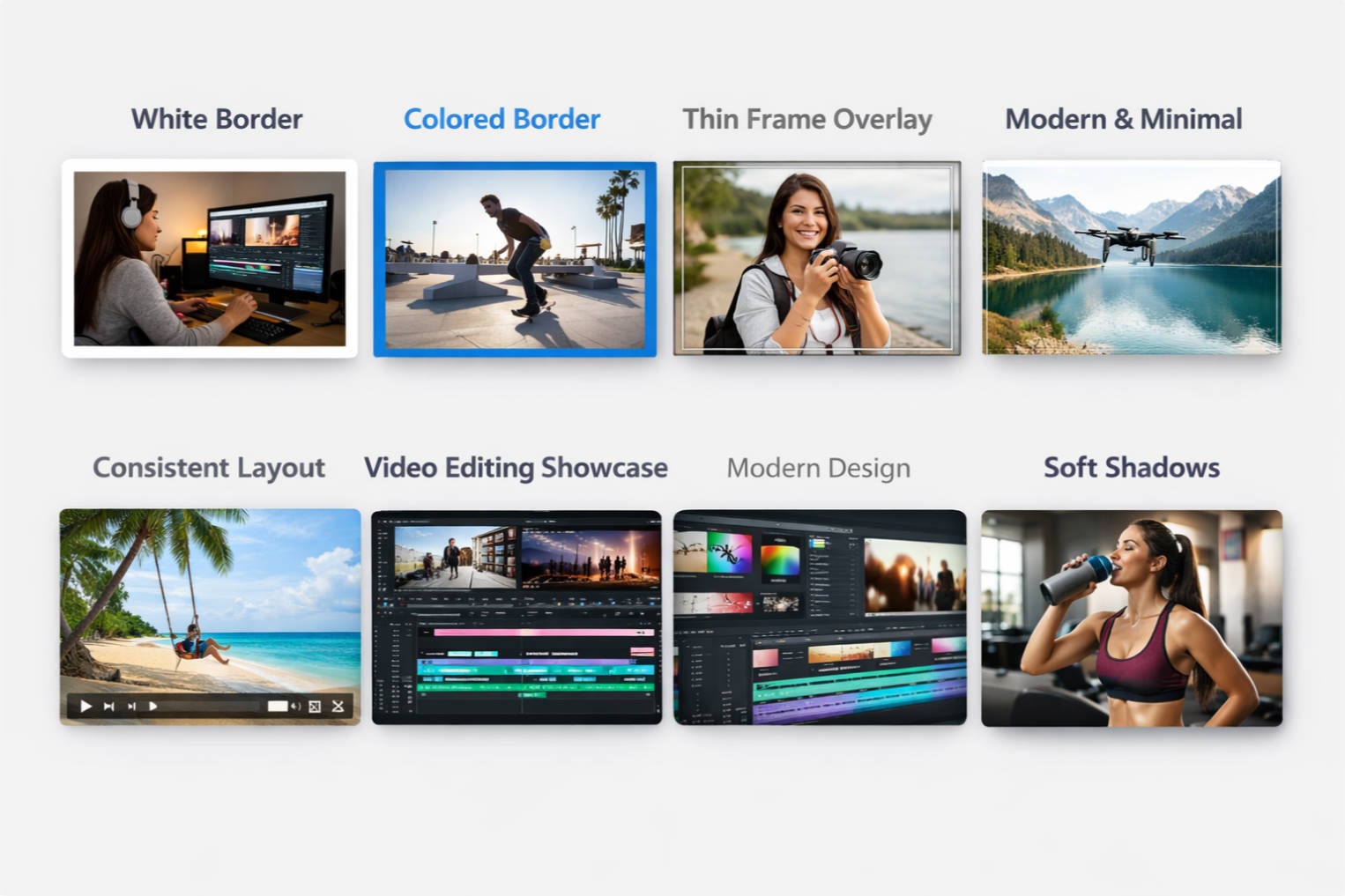
Part 1: How to Add Border to Video with Filmora on Windows/Mac [3 Ways]
Wondershare Filmora is a powerful yet easy-to-use video editing software designed for creators who want professional results without a steep learning curve. Compared with traditional industry tools like Adobe Premiere Pro or Final Cut Pro, Filmora focuses on speed, simplicity, and built-in creative features, making it ideal for both beginners and experienced editors.
Available on Windows and Mac, Filmora combines a lightweight performance with advanced AI tools, rich effects libraries, and intuitive controls. Tasks like adding video borders, applying visual effects, or animating elements can be done in just a few clicks—without heavy system requirements or complex workflows.
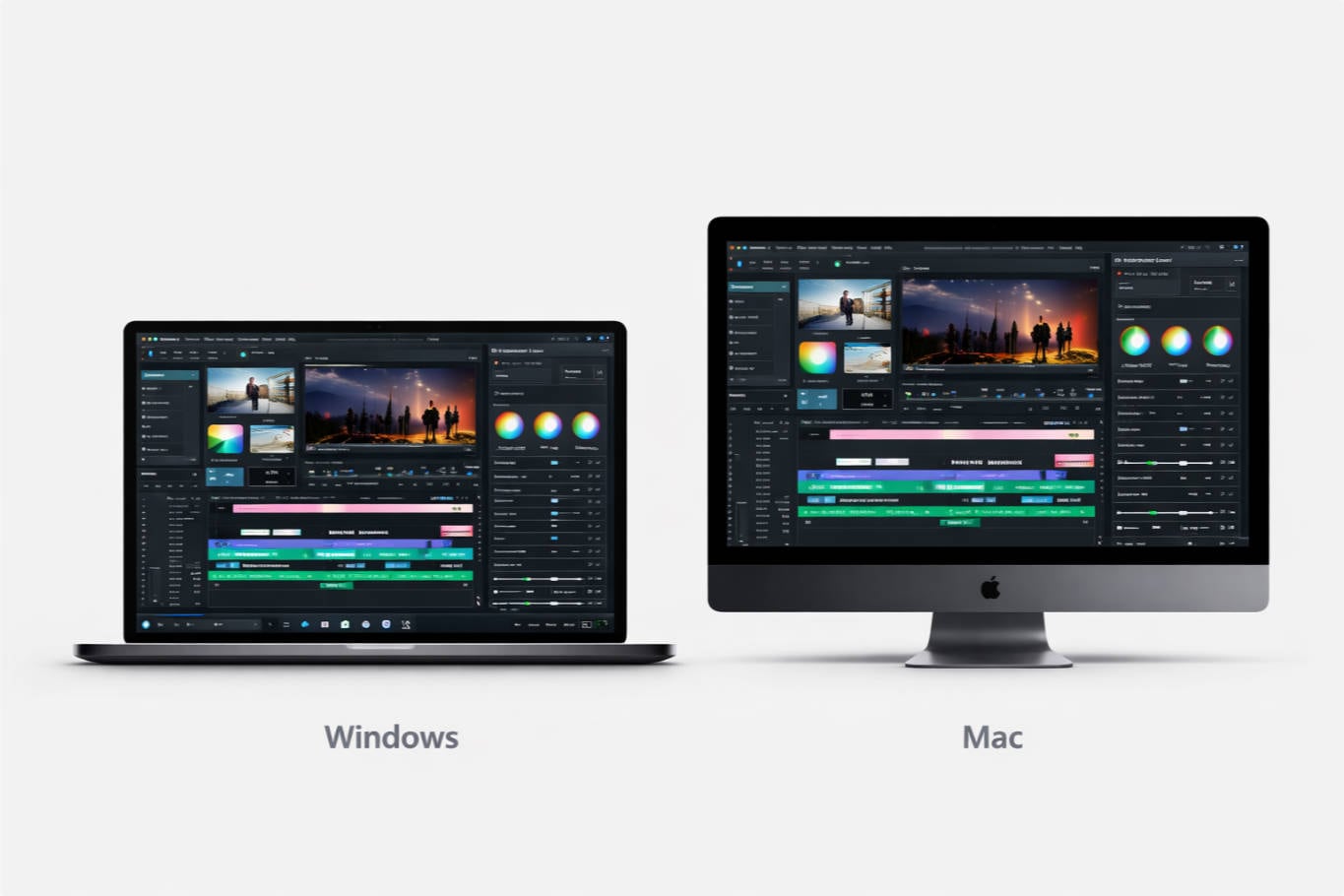
Follow the steps below to learn how to add a border to video using Wondershare Filmora:
Method 1: Add Borders with Built-in Border Presets
This method adds a simple border style to the video and is ideal when you want a clean frame without spending time on customization.
Below are some sample video border styles. You can download your favorite ones directly in Filmora and apply them to your own videos.






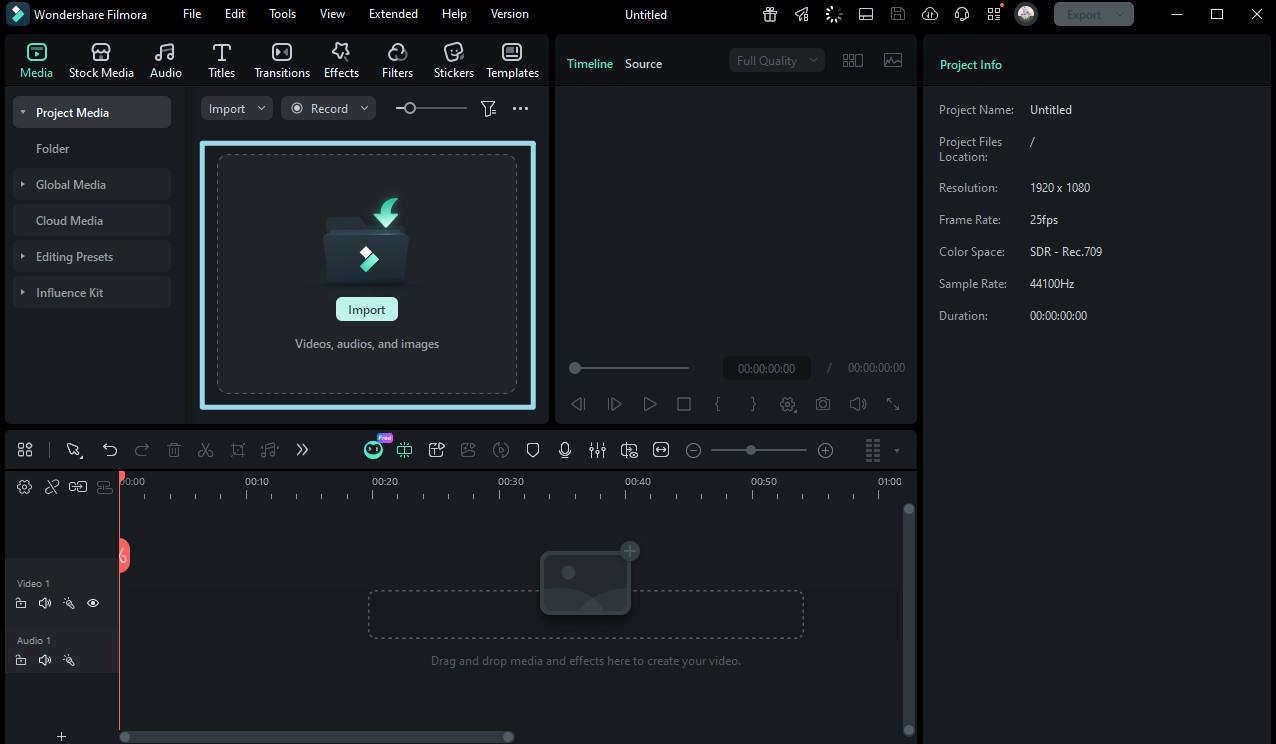
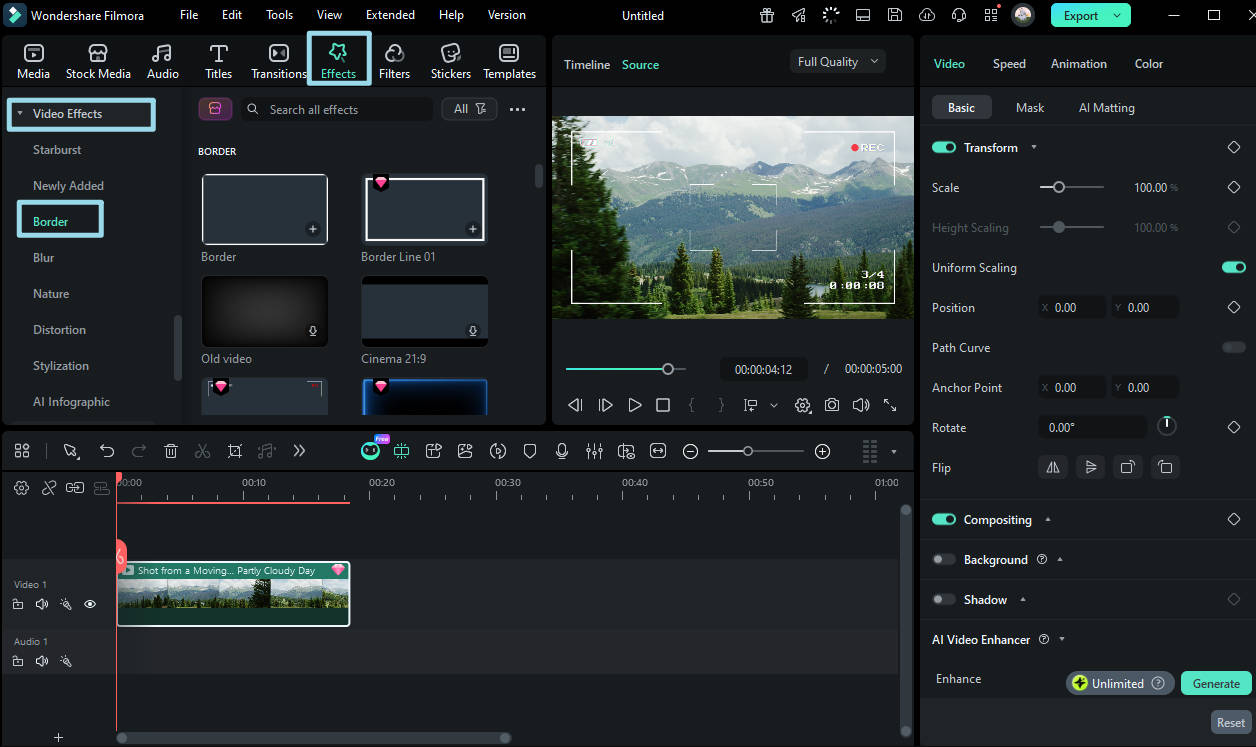
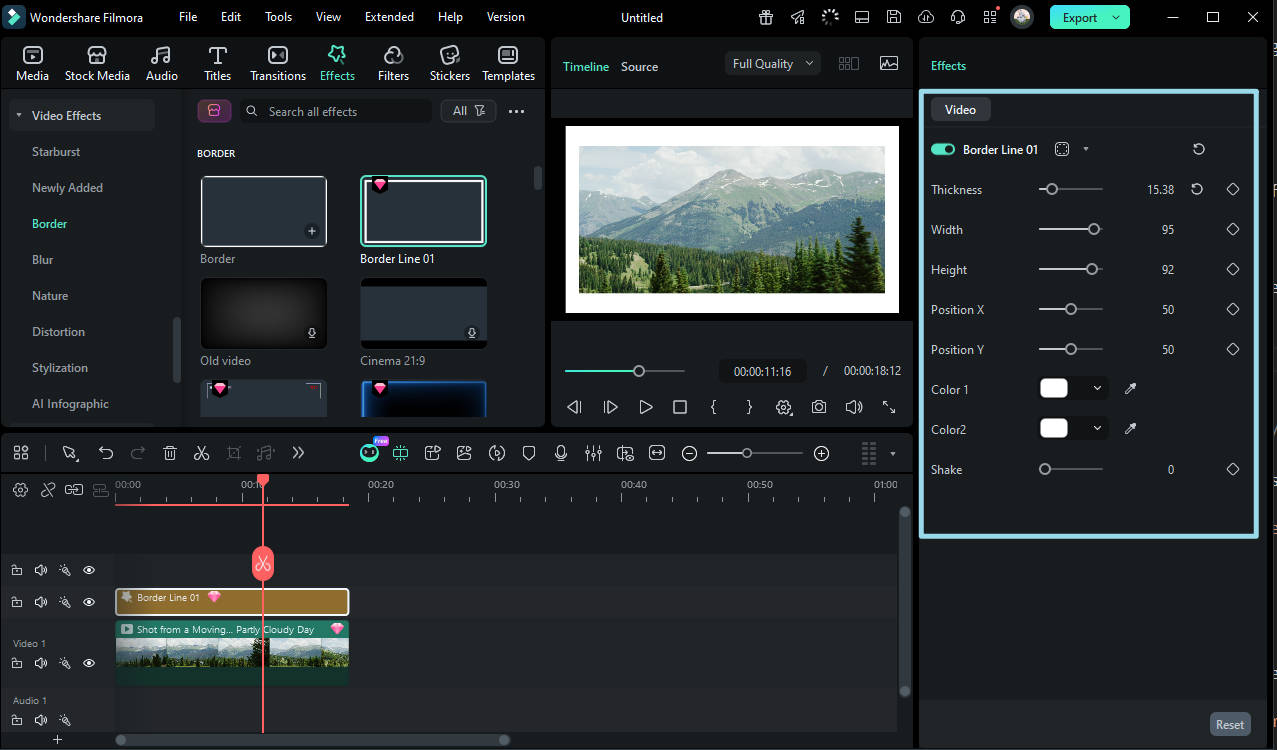
Method 2: Add Borders Around People (Human Border)
Filmora's Human Border feature combines built-in AI human segmentation with border effects, allowing you to automatically detect and track people in your video. With just one click, it intelligently follows the movement of each person, creating dynamic video borders without the need for manual adjustments, saving time while producing professional-looking results.

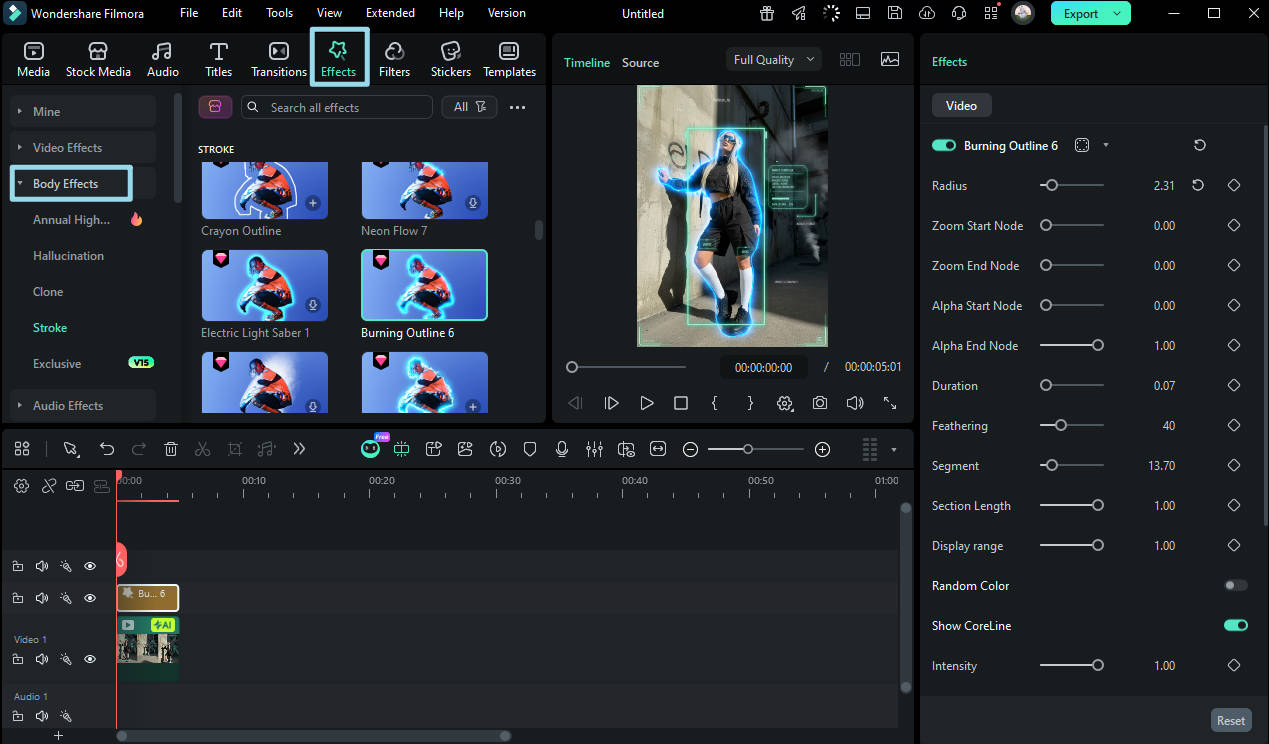
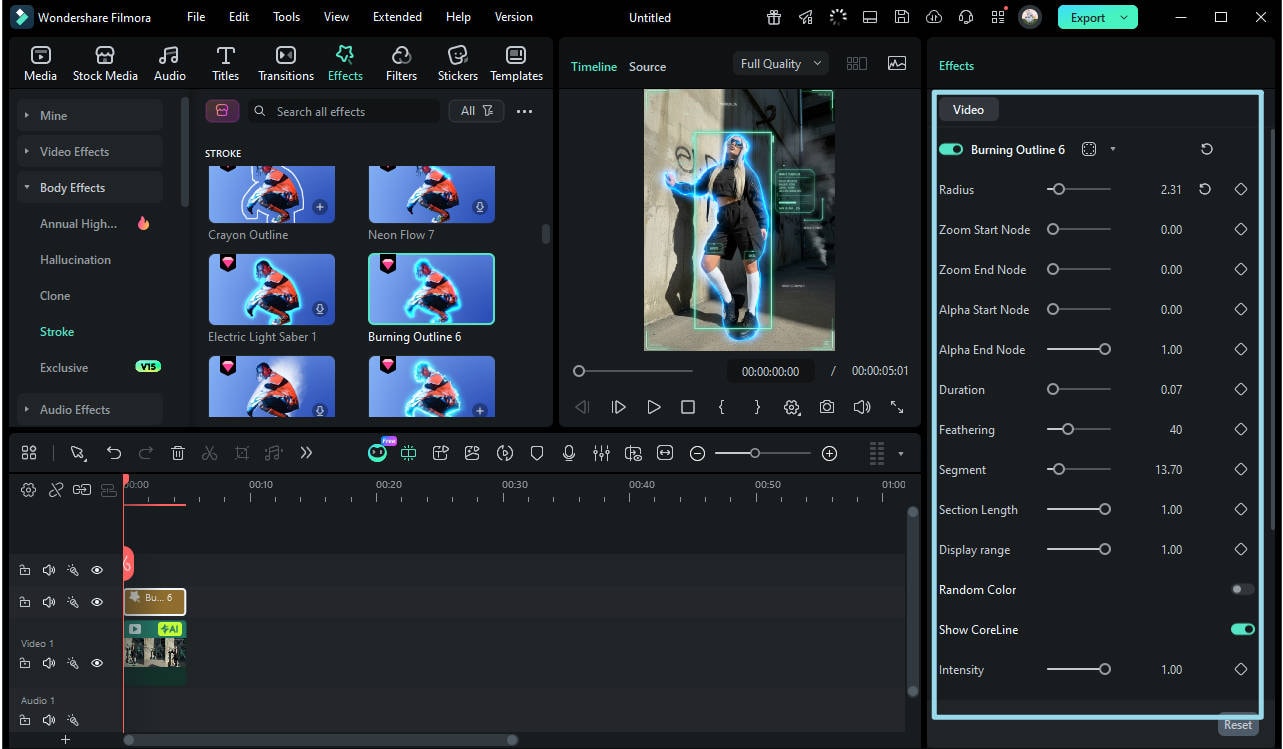
Explorer more usage of the AI Portrait effects here: How to Remove Video Background without Green Screen.
Method 3: Create Custom Borders with the Pen Tool
If you want completely custom, organic, and animated video borders that stand out from preset frames and templates, using Filmora's Pen Tool is a powerful way to do it. This tool lets you draw your own paths and shapes directly on the preview screen, then turn those lines into dynamic borders or motion graphics that follow your creative vision. It's especially useful for highlighting subjects, adding decorative outlines, or animating unique frames around people and objects in your video.
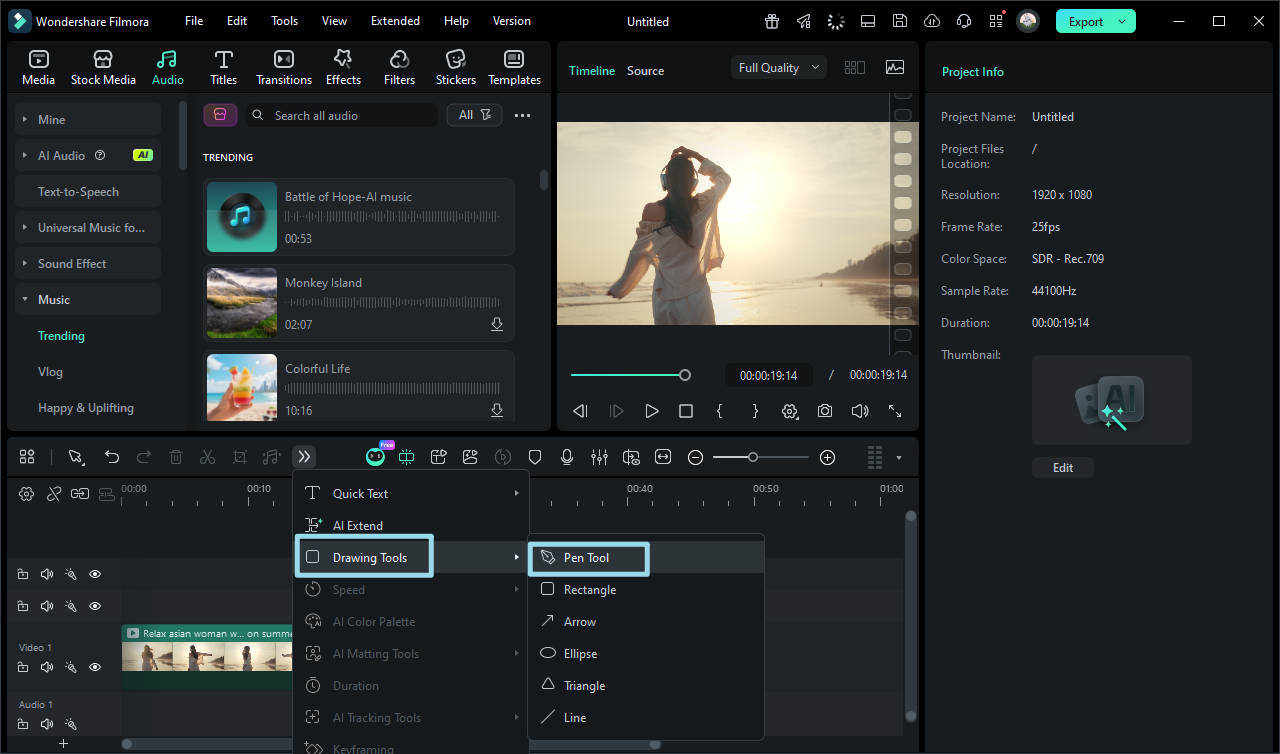
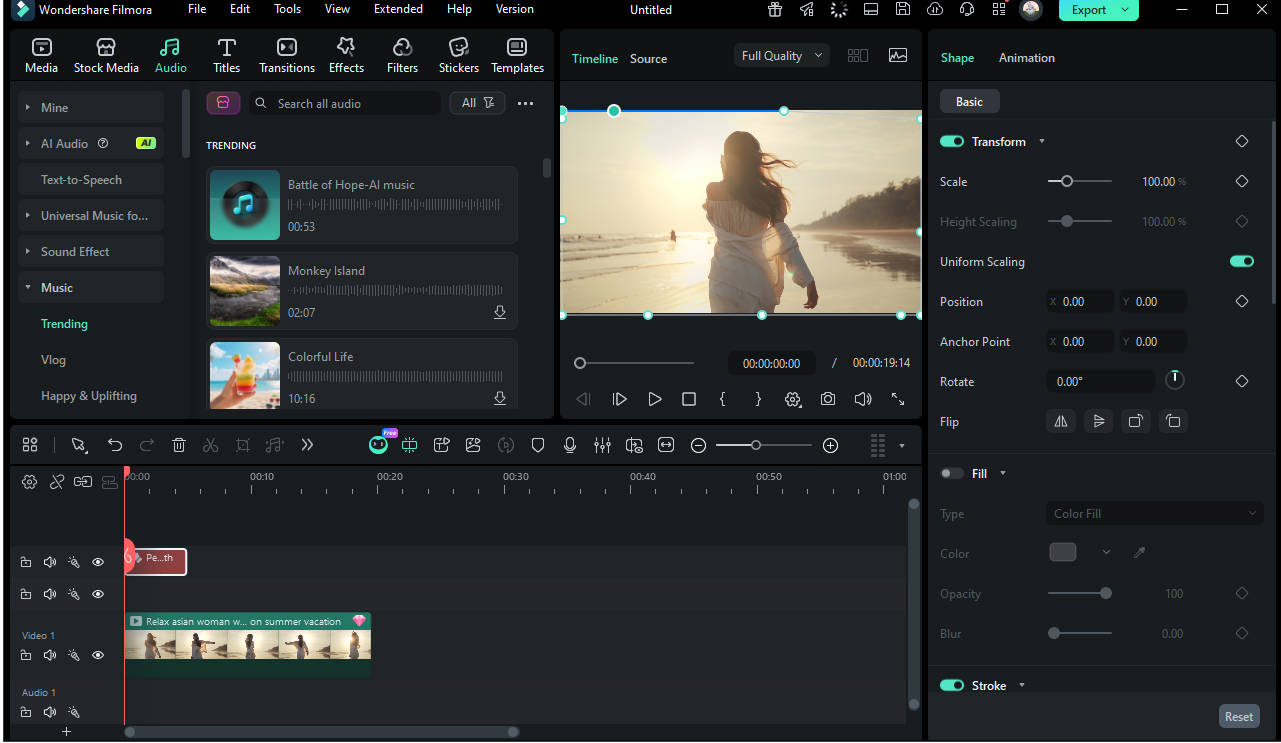



Learn more about using the Pen Tool with this comprehensive article: Filmora Pen Tool Tutorial
Part 2: How to Add Borders with iMovie on Mac
iMovie is a proprietary application developed by Apple Inc. and is available for iPhones, iPads, and Mac computers. Because the app detects and checks for genuine Apple hardware, it can't be installed even on the virtual machines running macOS. Nevertheless, iMovie is absolutely free for all devices, and it is also equipped with a plethora of features and presets to make post-production tasks easier, even for those who are new to the industry.
As for the borders, even though the software doesn't have any native tool or feature to add them to the video clips right away, the same effect can be achieved by using the 'Picture-in-Picture' option.
The process to add border to video with iMovie on Mac is given below:
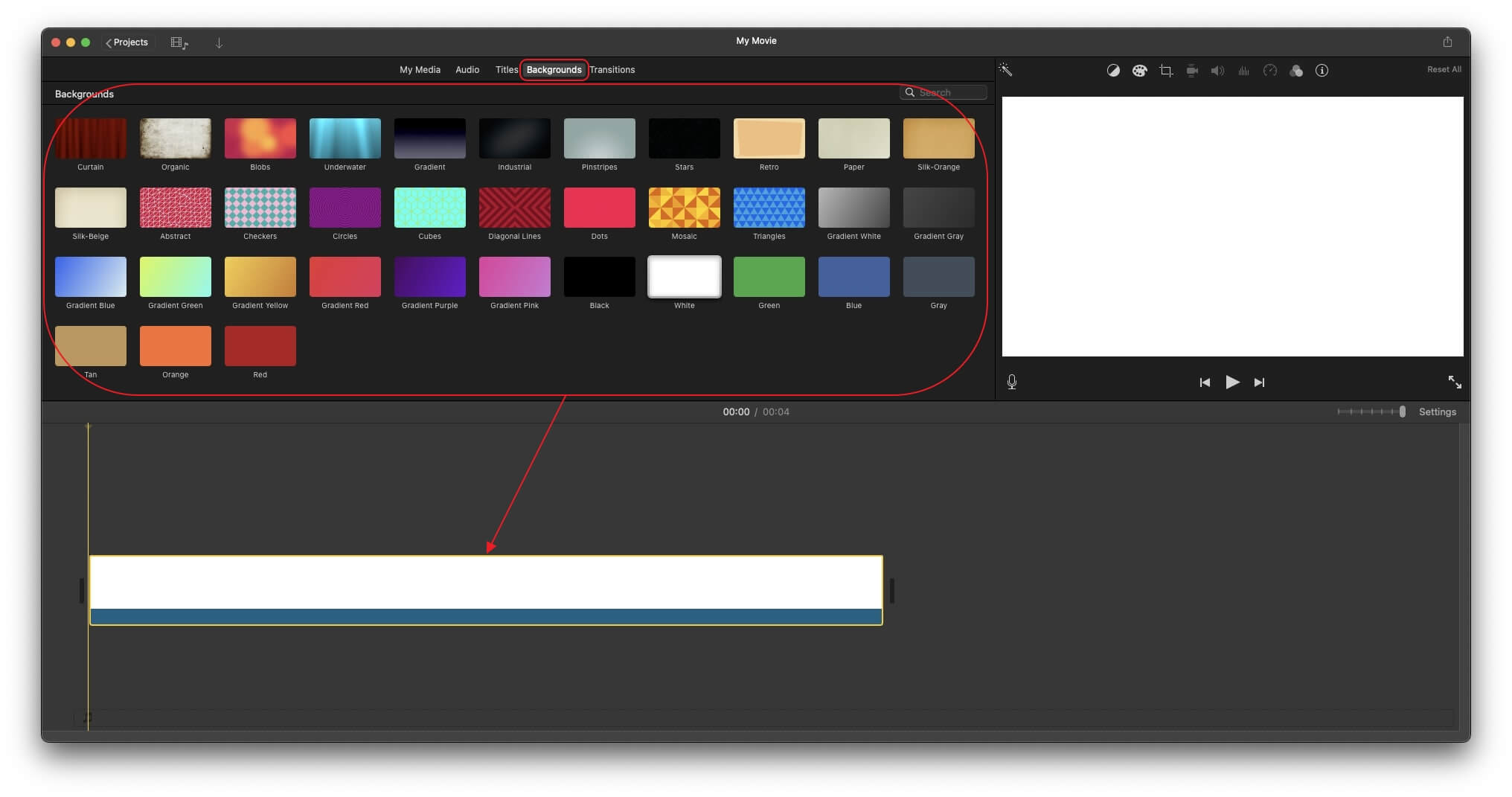
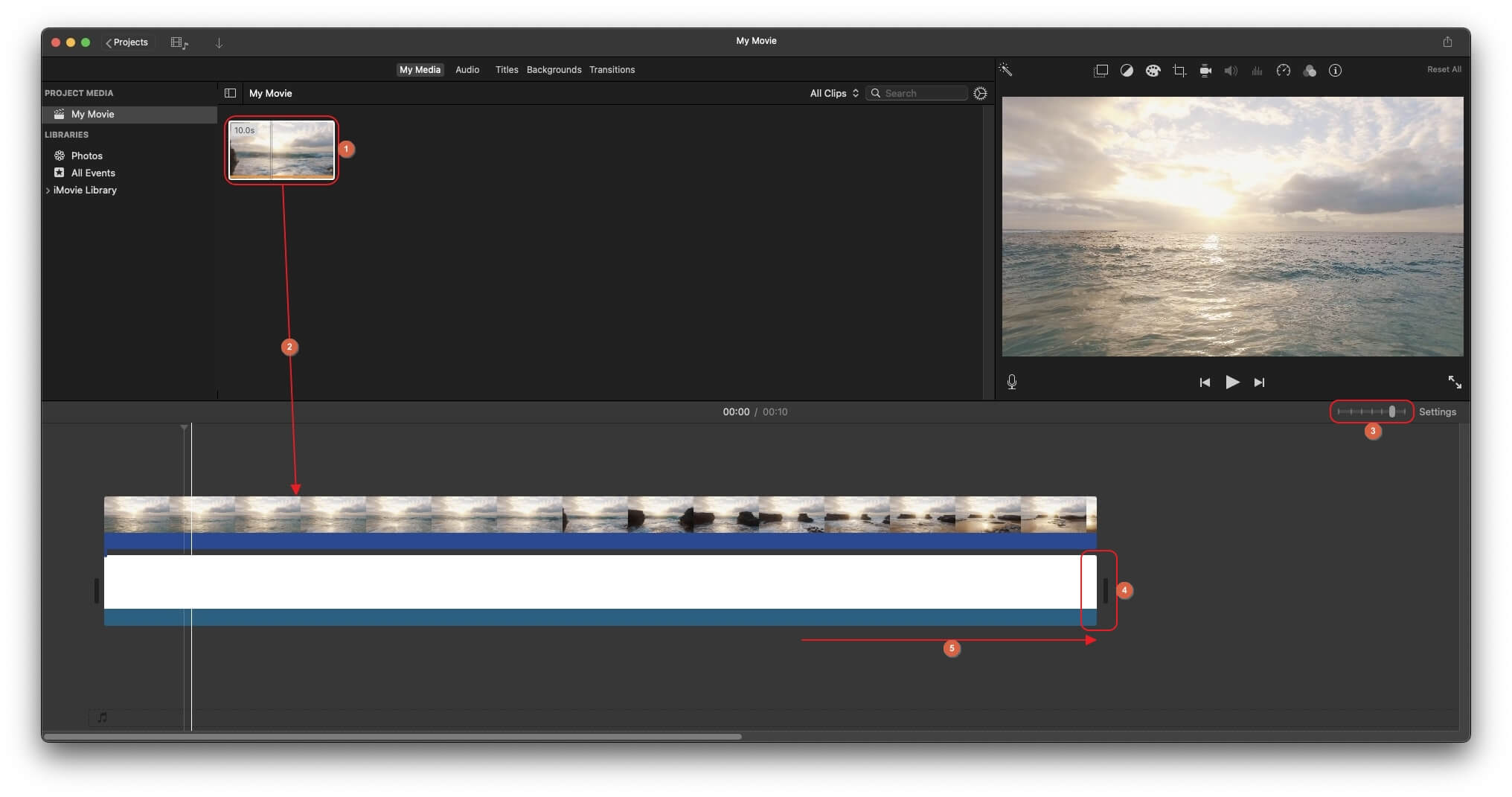
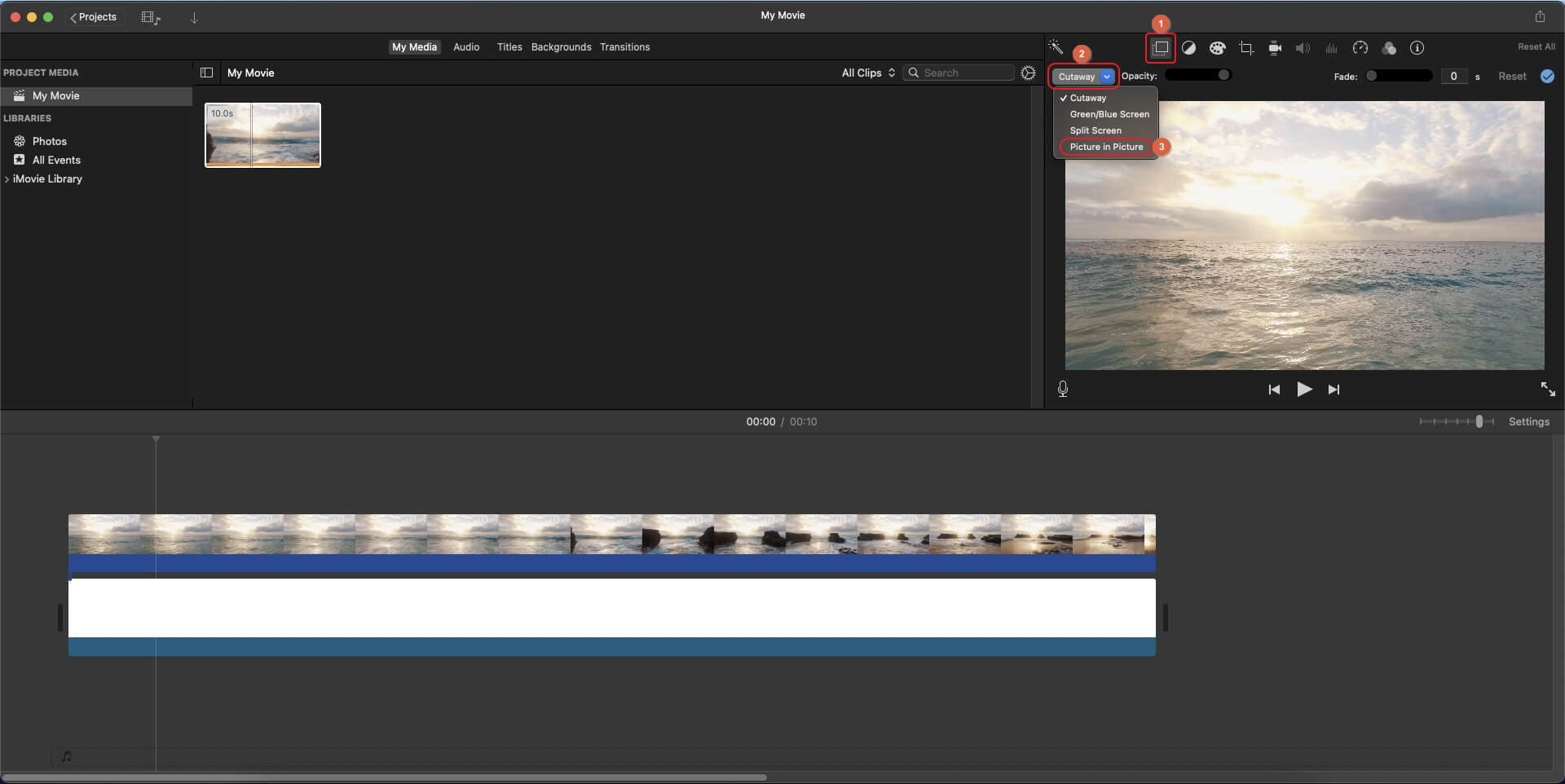
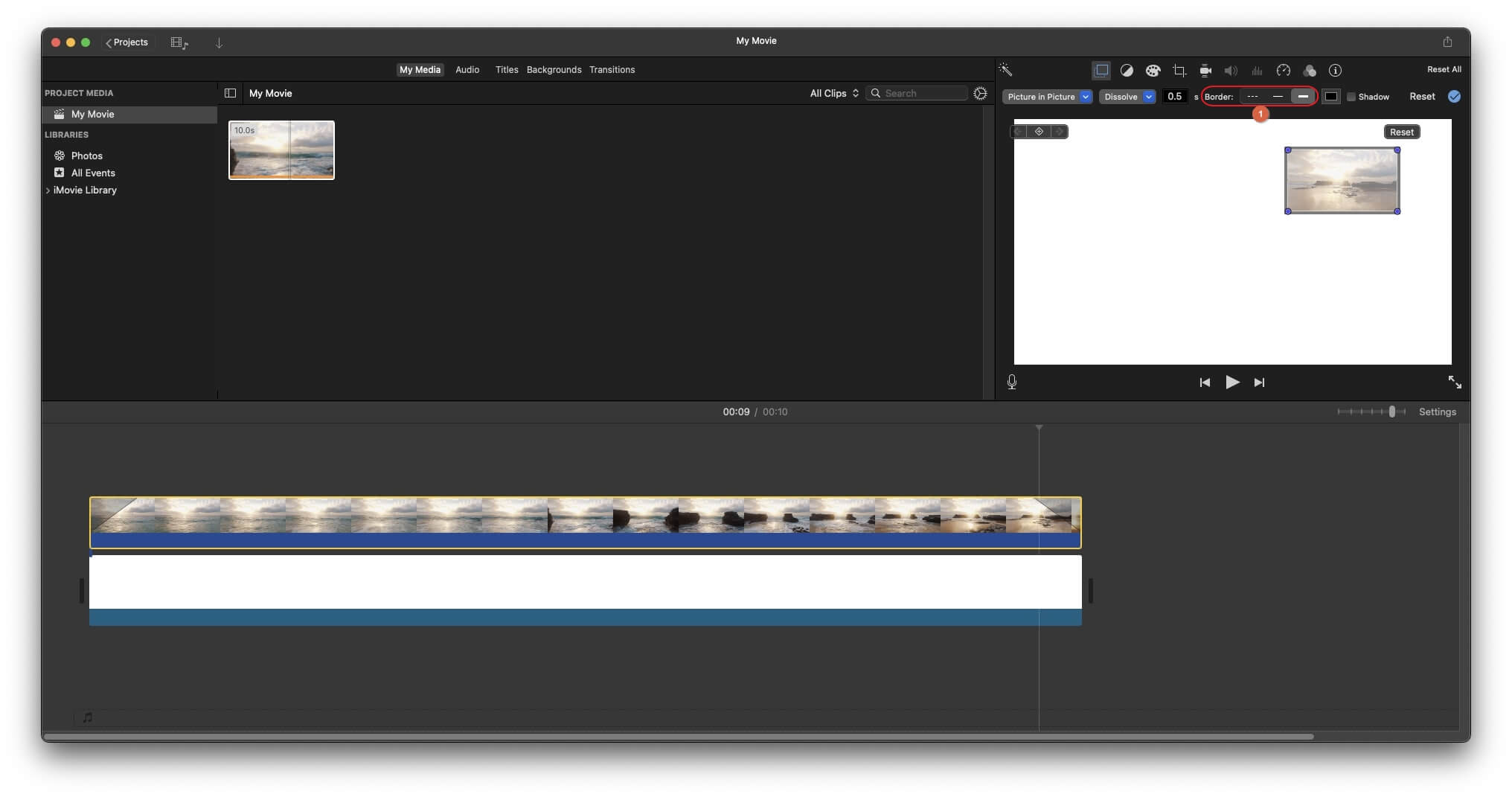
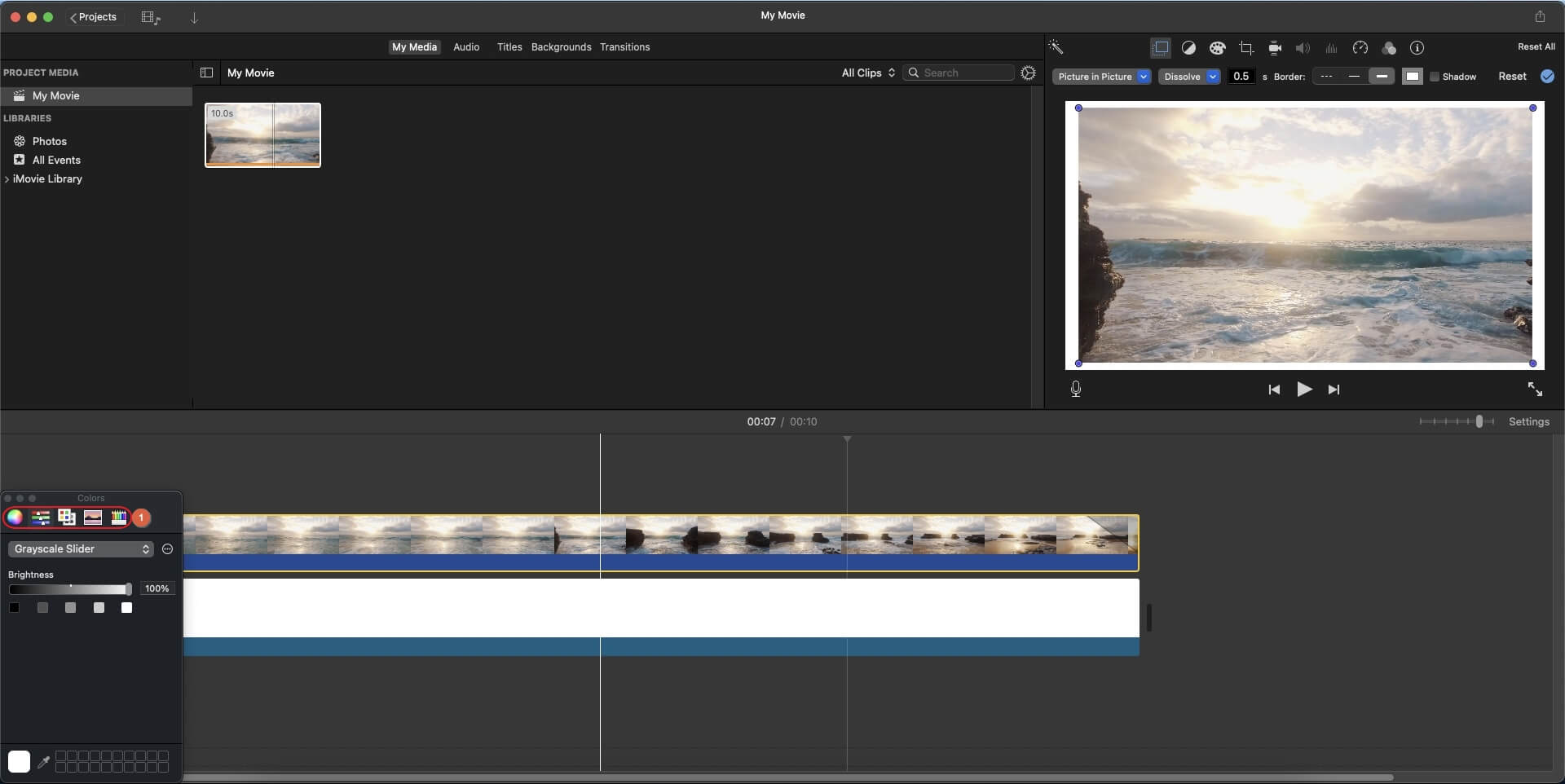
Conclusion
Compared with editors that require extra workarounds to create video borders, Wondershare Filmora offers a more direct and beginner-friendly solution. With built-in border presets, including retro frames and AI-powered human borders, you can apply stylish outlines to your footage in just a few clicks—no manual masking or complex setup required.
Whether you want to add a simple white border, apply a creative frame overlay, or highlight people in your video with an intelligent border effect, Filmora makes the process fast, intuitive, and flexible. As a result, your videos look cleaner, more polished, and more professional after export.
Frequently Asked Questions
-
Will adding a border reduce video quality after export?
No. Adding a border in Filmora does not reduce video quality as long as you export the video using the correct resolution and settings. Borders are applied as visual layers, so the original footage quality remains unchanged in the final output. -
How to put a border on a video on iPhone?
You can add a border to a video on iPhone by using a mobile video editing app that supports border and frame effects. The Filmora App for iOS allows you to import a video, apply built-in border styles or frames, and export the video directly from your phone with just a few taps. -
Can I add a border only to people in a video?
Yes. Filmora offers AI Portrait effects, such as Human Border, which automatically detect people in a video and apply a border only around the human subject. The border follows the person's movement, helping highlight people while keeping the background untouched.


